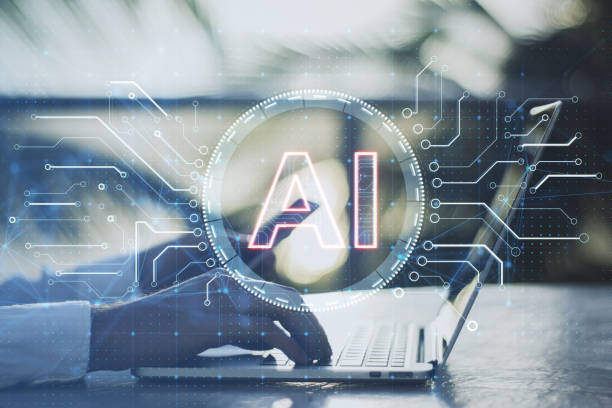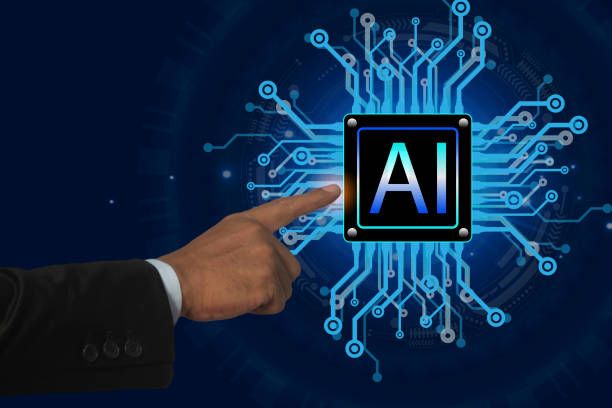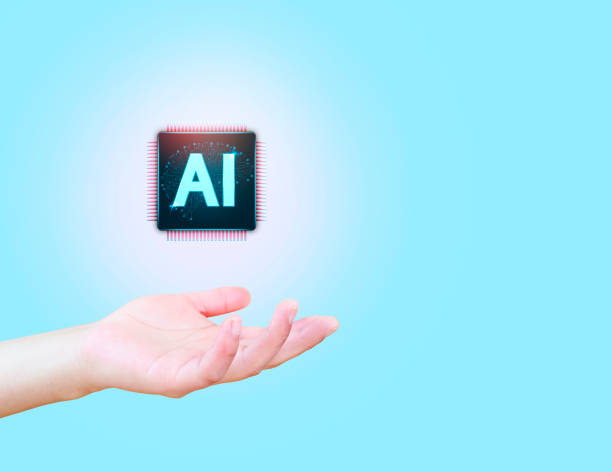Introduction to On-Page SEO and Its Vital Importance
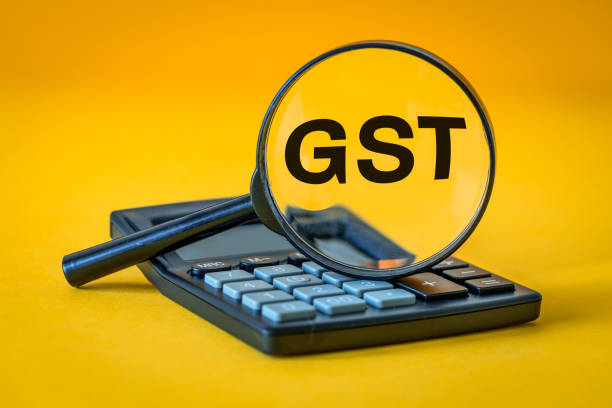
#OnPage_SEO or On-Page Optimization, is a set of actions and techniques performed within your website to improve its ranking in search engine results.
This process involves optimizing content, site structure, and HTML code to help search engines better understand the content of your pages.
Unlike off-page SEO, which deals with activities outside the site (such as link building), on-page SEO gives you complete control over it and is the foundation of any successful SEO strategy.
Without strong on-page SEO, your off-page SEO efforts may also be fruitless.
It is vital to understand how search engines view and interact with your website.
This educational and explanatory process helps you understand the importance of every part of your website.
From page titles to meta descriptions, from URL structure to image optimization, every component plays a significant role in this complex game.
The ultimate goal of on-page SEO is not only to attract Google’s crawling bots but also to provide an excellent user experience to visitors.
When users have a good experience on your site, positive signals are sent to search engines, which in turn improves your ranking.
This dual approach has made on-page SEO one of the most powerful tools for attracting organic traffic.
The importance of on-page SEO for online businesses and bloggers is growing daily, as online competition has intensified.
To succeed in today’s digital world, you cannot neglect optimizing your website internally.
Are visitors leaving your e-commerce site before purchasing? Don’t worry anymore! With Rasaweb’s professional e-commerce website design services, solve the problem of not converting visitors into customers forever!
✅ Significant increase in conversion rates and sales
✅ Unique and engaging user experience
⚡ Contact us now for a free consultation!
Keywords and Their Pivotal Role in On-Page SEO
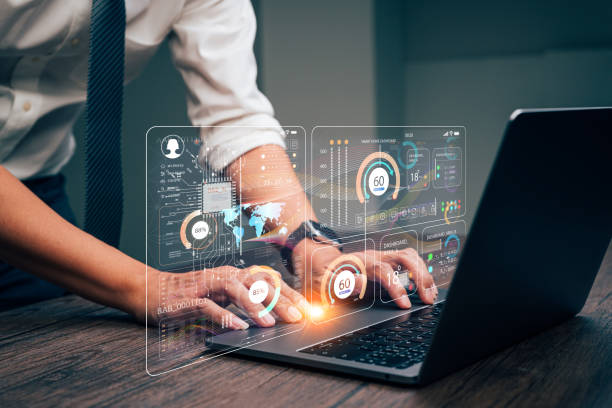
#Keywords are the beating heart of any #OnPage_SEO strategy.
Understanding how to choose and use appropriate keywords is fundamental to the success of your content optimization.
This section is a comprehensive guide to researching and effectively using keywords.
First, keyword research not only means finding frequently searched terms but also paying attention to the user’s search intent.
Is the user looking for information (informational keywords), intending to buy (commercial keywords), or searching for a specific website (navigational keywords)? Choosing the right keywords ensures that your content reaches the correct audience.
Tools such as Google Keyword Planner, SEMrush, and Ahrefs can be very helpful at this stage.
Keyword usage should not be excessive; “keyword stuffing” or over-stuffing keywords is not only ineffective but can also lead to penalties from search engines.
Keywords should be used naturally and organically in content, titles, subtitles, meta descriptions, and image descriptions (alt text).
Using synonymous keywords and related phrases (LSI keywords) also helps search engines better understand the main topic of your page and rank for other relevant keywords.
This is an educational approach to deepen your knowledge of keyword research, which directly impacts on-site optimization.
Remember that long-tail keywords, despite lower search volume, have higher conversion rates because they indicate a more specific user intent.
This part of the on-page SEO strategy can make a big difference in attracting targeted traffic.
Content Optimization for On-Page SEO and Its Added Value
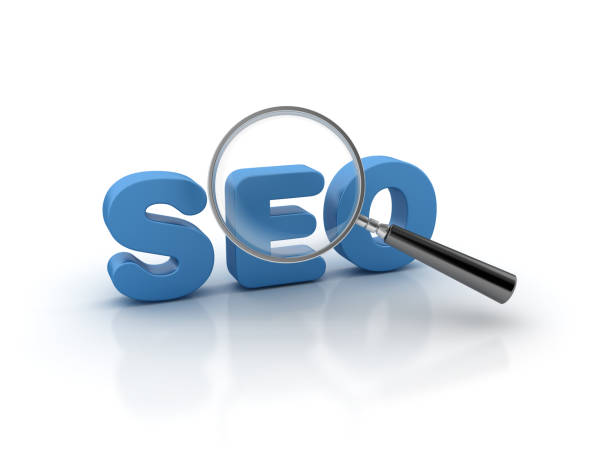
Content quality and structure form the backbone of any successful #OnPage_SEO strategy.
In this #specialized section, we will discuss various aspects of content optimization to improve rankings in search engines and provide value to users.
Your content must be unique, comprehensive, and relevant to your target keywords.
Google rewards content that fully addresses user needs.
Therefore, instead of focusing solely on word count, focus on the depth and quality of information.
Using clear titles and subtitles (such as H1, H2, H3) helps structure the content and improves its readability for users and search engines.
Furthermore, using lists, images, videos, and infographics can enhance the appeal of your content and improve user experience (UX).
Your content should answer potential user questions and provide solutions to their problems.
Good content naturally earns links and is shared, which indirectly helps your #OnPage_SEO.
Optimizing content for on-page SEO is not just about bots; it’s about humans.
This is a practical guide for creating content that is both optimized for search engines and valuable to users.
Below, the table summarizes the important elements of content optimization:
| Element | Description | Importance in On-Page SEO |
|---|---|---|
| Content Quality | Providing accurate, comprehensive, and unique information | Increased ranking, reduced bounce rate, improved user experience |
| Heading Structure (H1-H6) | Logical use of headings to organize content | Improved readability, aids search engine understanding of the topic |
| Keyword Usage | Natural inclusion of keywords and synonyms | Page relevance to user searches, increased ranking |
| Images and Media | Image optimization (size, alt text) and video usage | Visual appeal, reduced bounce rate, aids content understanding |
By following these tips, your content will not only appear better in search results but also provide a deeper and better user experience for visitors.
This section offers an analytical and explanatory approach to continuously improving your site’s content.
On-Page Technical SEO for Better Search Engine Understanding

#Technical_Page_Optimization is an important part of #OnPage_SEO that is often overlooked.
This #specialized aspect includes settings and technical elements in the page’s HTML code that help search engines better understand and index your content.
The first step is optimizing meta tags.
The Title Tag is the most important element in on-page SEO and should include the main and attractive keyword.
The Meta Description, although not directly affecting ranking, can increase the click-through rate (CTR) by providing an appealing summary of the page’s content.
URL structure is also very important; short, descriptive URLs containing keywords help search engines and users understand the page’s topic.
Optimizing images by using appropriate formats, compressing them to reduce size, and adding descriptive Alt Text including keywords, not only helps with loading speed but also allows search engines to understand your visual content.
Page Speed is one of Google’s important ranking factors.
A website that loads quickly provides a better user experience and reduces the Bounce Rate.
Tools such as Google PageSpeed Insights can help you identify and resolve speed issues.
This explanatory and educational section shows you how to take your website’s #OnPage_SEO optimization to a higher level by improving these technical aspects.
Does your current e-commerce website design lead to lost customers and sales?
Rasaweb is your solution with modern and user-friendly e-commerce website designs!
✅ Significant increase in conversion rates and sales
✅ Strong branding and building customer trust
⚡ Get a free e-commerce website design consultation from Rasaweb!
Internal Linking and Its Strategic Importance
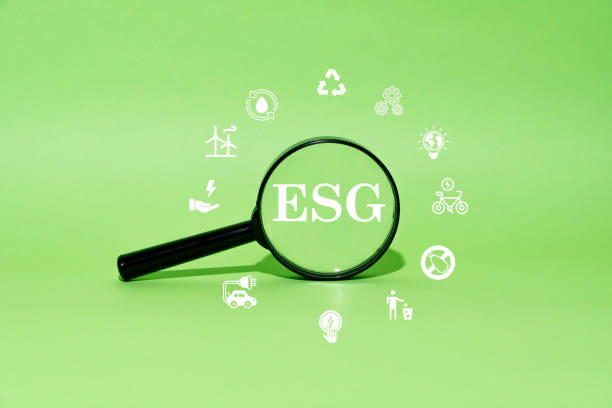
#Internal_Linking is one of the most powerful tools available to SEOs for improving #OnPage_SEO.
This process involves creating links from one page on your website to another page on the same website.
This has several key benefits: firstly, it helps search engines better understand your website’s structure and discover and index new pages.
Secondly, “link juice” or ranking power is distributed throughout your website, meaning that more powerful pages can help boost the ranking of other pages.
This is an analytical approach to understanding the flow of authority within your website.
Thirdly, it improves user experience.
When users can easily navigate through relevant links on your site, they spend more time on your site, and the bounce rate decreases.
These positive signals are sent to search engines and indicate the quality and value of your content.
When creating internal links, use descriptive and relevant anchor text.
Instead of “Click here”, use phrases like “Comprehensive On-Page SEO Guide” which makes it clear to both the user and the search engine what the linked page is about.
A strong internal linking strategy not only helps search engines better understand your site but also encourages users to delve deeper into your content.
This educational section helps you discover the hidden power of internal linking for significant on-page SEO improvement.
User Experience (UX) and Its Close Connection with On-Page SEO
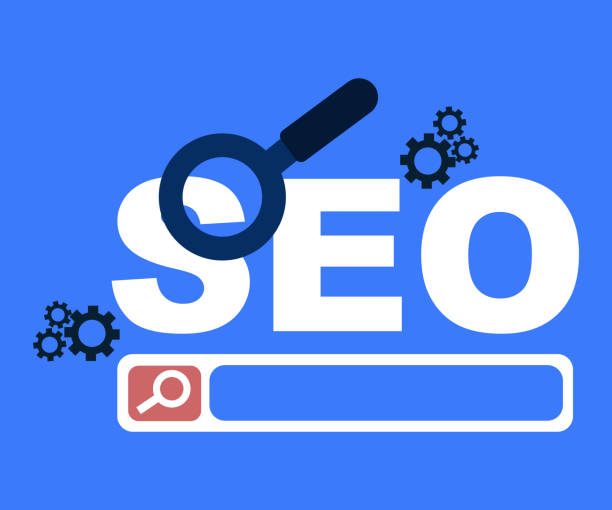
In today’s #SEO world, #User_Experience (UX) is no longer a luxury option but a vital and inseparable factor of #OnPage_SEO.
Google increasingly emphasizes user experience-related signals, such as Bounce Rate, Time on Page, and Click-Through Rate (CTR).
A website with a poor user experience, even if technically optimized, may eventually lose its ranking.
This section provides an analytical look at how UX relates to success in on-page SEO.
Factors such as Mobile-Friendliness are of high importance.
Given the increasing use of mobile devices for searching, your website must be fully responsive and display correctly on any screen size.
Page loading speed, as mentioned earlier, directly affects UX; users abandon pages that load slowly.
Easy and intuitive site navigation, clear information architecture, and attractive visual design all contribute to improving UX.
When users can easily find what they are looking for, they stay longer on your site and visit more pages.
These positive signals tell Google that your website is valuable and should be ranked higher.
Providing an excellent user experience not only helps retain visitors but also directly leads to an improved on-page SEO ranking.
This guide emphasizes the importance of synergy between UX and SEO.
Advanced Tools and Techniques in On-Page SEO for Maximum Optimization
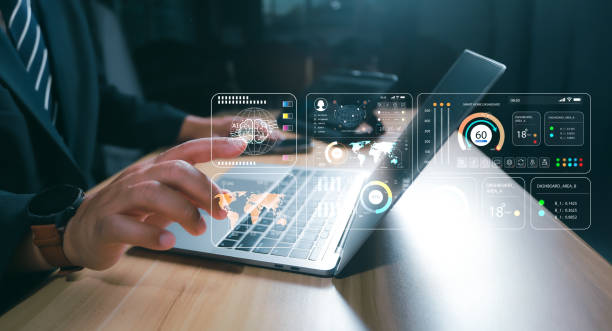
To achieve maximum potential in #OnPage_SEO, using advanced tools and techniques is essential.
This specialized section introduces you to some of these key methods and tools.
One of the most powerful techniques is implementing Structured Data or Schema Markup.
Schema Markup helps search engines understand your page’s content in a more organized way, which can lead to the display of “Rich Snippets” in search results; these snippets can significantly increase your click-through rate.
Measuring and monitoring Google’s Core Web Vitals is also crucial.
These metrics include Largest Contentful Paint (LCP) for loading speed, First Input Delay (FID) for responsiveness, and Cumulative Layout Shift (CLS) for visual stability.
Improving these metrics directly helps improve user experience and consequently, your on-page SEO ranking.
Tools like Google Search Console are essential for monitoring your site’s search performance, identifying indexing issues, and reviewing Core Web Vitals reports.
Using XML sitemaps to help search engines discover all your pages and robots.txt files to control bot access to specific parts of the site are other important technical aspects.
Below, you can see a table of important tools for on-page SEO:
| Tool | Primary Use | Impact on On-Page SEO |
|---|---|---|
| Google Search Console | Monitoring site performance, identifying crawl and index errors | Identifying and fixing technical issues, improving visibility |
| Google PageSpeed Insights | Analyzing website page loading speed | Improving Core Web Vitals, increasing speed and user experience |
| Schema Markup Generators | Generating structured data codes | Creating Rich Snippets, better content understanding by engines |
| Yoast SEO / Rank Math (for WordPress) | Optimizing meta tags, XML sitemaps, content analysis | Ease of applying on-page SEO settings, guidance for optimization |
Familiarity with these tools and techniques is a vital guide for any SEO specialist and allows you to have greater control over optimizing your site’s on-page SEO.
Common Challenges and Errors in On-Page SEO to Avoid

Despite the immense importance of #OnPage_SEO, many webmasters and SEO specialists face common challenges and errors that can harm their site’s performance.
This explanatory and informative section points out some of these issues so you can avoid them.
One of the biggest mistakes is Keyword Stuffing.
Excessive and unnatural use of keywords not only doesn’t help search engines but can also be identified as a black-hat technique and lead to penalties.
Your content should be written for users, not just for search engines.
Another problem is Duplicate Content.
If similar content exists on multiple pages of your site, search engines might get confused and be unable to determine which version to rank.
This can lead to a loss of ranking and link authority.
Using canonical or noindex tags when necessary can solve this problem.
Slow page loading speed is also a common error that directly impacts user experience and on-page SEO ranking.
Unoptimized images, heavy JavaScript and CSS codes, and inadequate hosting are the main reasons for a slow site.
Neglecting Mobile-Friendliness and not optimizing for mobile devices can also harm a lot of traffic, as Google uses a mobile-first indexing algorithm.
These insights help you prevent ranking drops in on-page SEO and provide a clear path for your on-site optimization.
Are you losing potential customers due to an unprofessional website? Rasaweb is your answer! With our specialized corporate website design services:
✅ Enhance your business’s credibility and standing
✅ Experience attracting more targeted customers
⚡ Act now for a free consultation!
Case Study and Analysis of On-Page SEO Success from a New Perspective
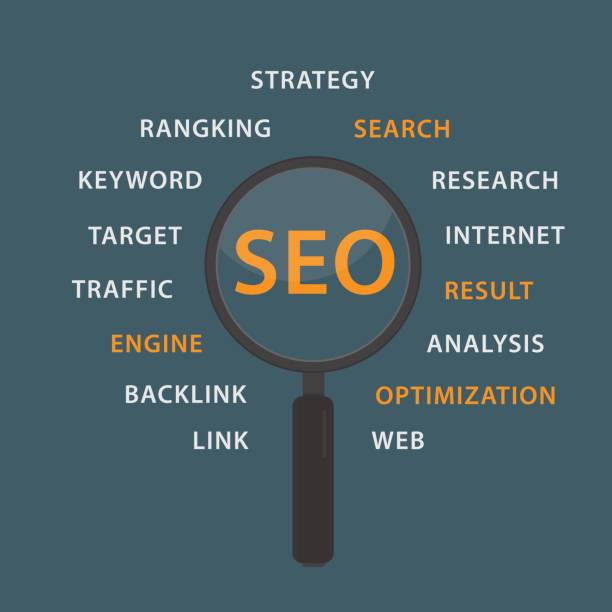
To deeply understand the potential of #OnPage_SEO, looking at successful cases and analyzing the reasons behind them can be very #entertaining and #analytical.
Let’s examine a hypothetical scenario: a startup website in the field of “online English language education” that initially had very little traffic.
By focusing on its on-page SEO optimization, this website managed to increase its organic traffic by 300% within six months and rank on the first page of Google for dozens of relevant keywords, including “best online English course.”
What actions led to this success?
1.
**Comprehensive Keyword Research:** Instead of focusing on general and highly competitive keywords, the focus was on long-tail keywords relevant to user intent (e.g., “English grammar tips for beginners”).
2.
**In-depth and Specialized Content Creation:** Articles of at least 1500 words, including educational videos and relevant infographics, were produced, which fully answered user questions.
This content stood out not only in word count but also in added value and responsiveness to user needs.
3.
**Strong Technical Optimization:** Site loading speed was reduced to less than 2 seconds, the site was designed to be fully responsive for mobile, and Schema Markup was used for courses, leading to Rich Snippets display in search results.
4.
**Smart Internal Linking:** By creating a logical internal linking structure, “link juice” was effectively distributed throughout the site, and related pages were linked to each other so users and search engines could easily navigate the site.
This analytical example shows how a comprehensive approach to on-page SEO, focusing on content quality, user experience, and technical aspects, can lead to significant results.
It is important to continuously monitor site performance with tools like Google Analytics and Search Console to identify and improve weaknesses.
The Future of On-Page SEO and Final Tips for Sustainable Success
![]()
The world of #SEO, especially #OnPage_SEO, is constantly changing and evolving.
What is optimized today may need revision tomorrow.
This informative and explanatory section addresses future trends and final tips for maintaining sustainable success in on-site optimization.
Artificial Intelligence (AI) and Machine Learning are playing an increasing role in Google’s ranking algorithms.
This means Google has become smarter in understanding user intent and evaluating content quality.
Therefore, focusing on producing truly valuable, accurate, and user-centric content is more important than ever.
Keywords alone are no longer enough; Google is looking for content that comprehensively answers user needs.
Voice Search and Visual Search are also growing, requiring different optimization for on-page SEO.
For voice search, focusing on conversational and long-tail keywords is important, while for visual search, precise image optimization and the use of structured data for images become crucial.
Optimizing for Core Web Vitals and providing a flawless user experience (with high speed and excellent user interface) will remain a priority.
Ultimately, on-page SEO is a continuous process, not a one-time project.
Regular content review, information updates, and site performance monitoring through tools like Google Search Console are essential for maintaining rankings and traffic.
By following these principles and staying updated with the latest algorithm changes, you can ensure your website remains on the path to SEO success for years to come.
Success in on-page SEO requires patience, persistence, and a comprehensive approach.
Frequently Asked Questions
| Row | Question | Answer |
|---|---|---|
| 1 | What is On-Page SEO? | On-page SEO refers to a set of actions performed within a website (on its pages) to improve its ranking in search engine results. This includes optimizing content, site structure, and HTML codes. |
| 2 | Why is On-Page SEO important? | On-page SEO helps search engines better understand page content and determine whether that page is relevant and valuable for user searches. This better understanding leads to higher rankings. |
| 3 | What is the first and most important step in On-Page SEO? | Keyword Research is the most important initial step. By finding appropriate keywords, targeted content relevant to user needs can be produced. |
| 4 | What is the role of the Title Tag in On-Page SEO? | The title tag is one of the most important ranking factors and should include the main keyword. This tag is displayed as the page title in search results and affects the click-through rate (CTR). |
| 5 | What is the importance of the Meta Description? | The meta description does not directly affect ranking, but by providing an attractive summary of the page’s content in search results, it can encourage users to click, thereby increasing the click-through rate (CTR). |
| 6 | Why is using headings (H1, H2, etc.) in content important? | Headings help structure content and improve readability for users and search engine crawlers. Using keywords in headings also helps search engines better understand the topic. |
| 7 | What does Image Optimization in On-Page SEO include? | It includes compressing images to reduce size, using descriptive and relevant file names, and filling the Alt tag (alternative text) with relevant keywords to help search engines understand the image content. |
| 8 | What is Internal Linking in On-Page SEO? | Internal linking refers to creating links between different pages of a website. This helps distribute page authority (Link Equity), improves user experience, and assists search engine crawlers in discovering new pages. |
| 9 | Why is Page Speed important for On-Page SEO? | Page loading speed is a direct ranking factor and significantly affects user experience. Slow pages can lead to an increased Bounce Rate and reduced user engagement. |
| 10 | What role does quality content play in On-Page SEO? | Quality, comprehensive, unique, and valuable content for the user is the core of on-page SEO. This content not only attracts and retains users but also sends positive signals to search engines, contributing to better rankings. |
And other services by Rasaweb Advertising Agency in the field of advertising
Smart Social Media: An effective tool for online growth with the help of Google Ads management.
Smart SEO: A fast and efficient solution for online growth focusing on precise audience targeting.
Smart Direct Marketing: A combination of creativity and technology to improve SEO ranking by optimizing key pages.
Smart Data Analysis: Designed for businesses seeking to improve SEO ranking through marketing automation.
Smart Google Ads: A fast and efficient solution for user engagement focusing on custom programming.
And over hundreds of other services in the field of internet advertising, advertising consulting, and organizational solutions
Internet Advertising | Advertising Strategy | Sponsored Content
Sources
What is Internal SEO? Comprehensive Guide to Internal SEO for Websites (On-Page SEO)
What is Internal SEO (On-Page SEO)? Complete Internal SEO Training | SEO Audio
Internal SEO (On-Page SEO) Training and its Important Tips | Web Ramz
Comprehensive Guide to On-Page SEO for Websites to Increase Ranking and Targeted Traffic – Virgul
📍 Rasaweb Afarin Digital Marketing Agency specializes in providing comprehensive digital solutions for your business. From SEO strategies and content marketing to advanced e-commerce website design and targeted advertising campaigns, we transform your online presence.
📍 Tehran, Mirdamad Street, next to Bank Markazi, Southern Kazeroon Alley, Ramin Alley, No. 6


